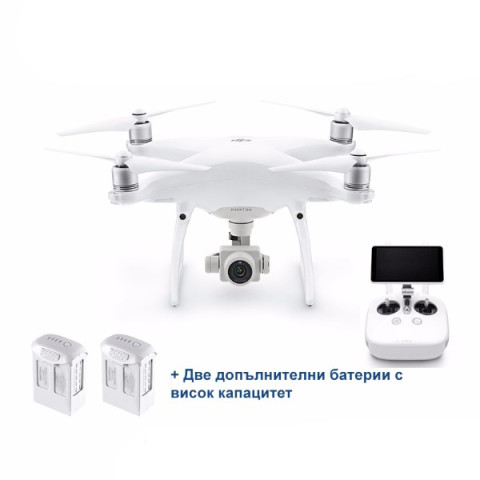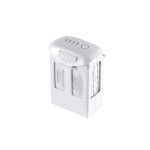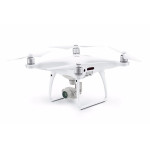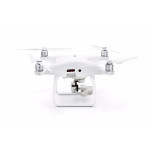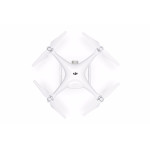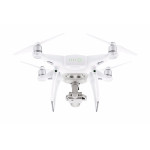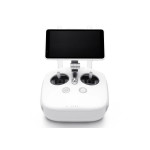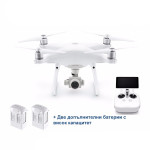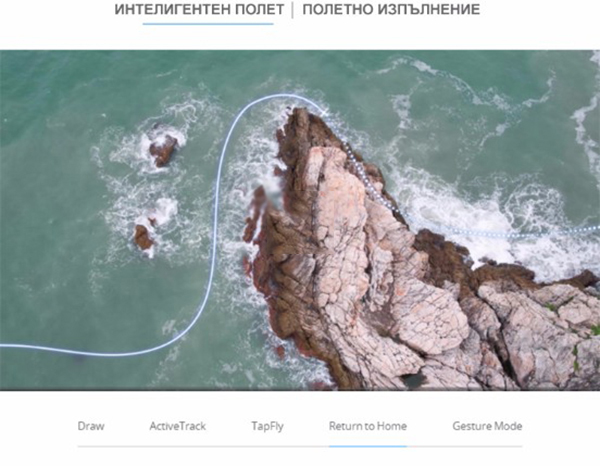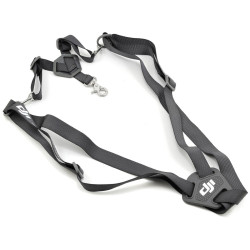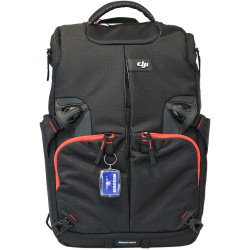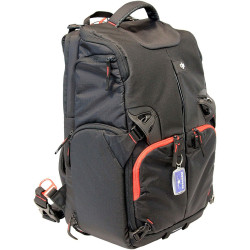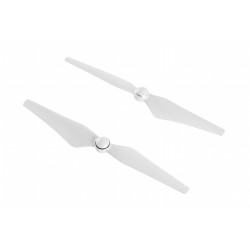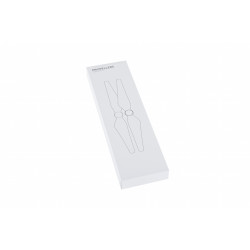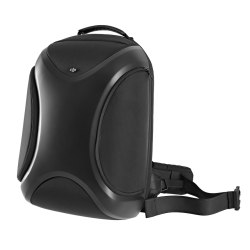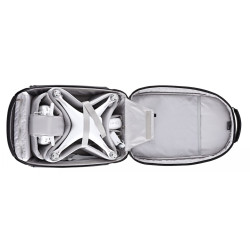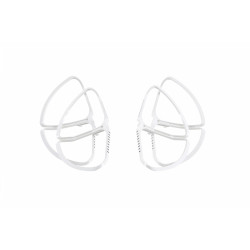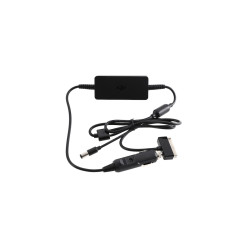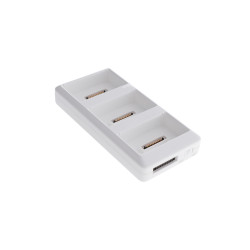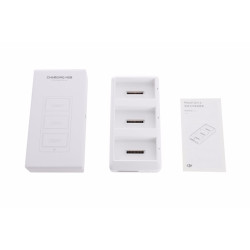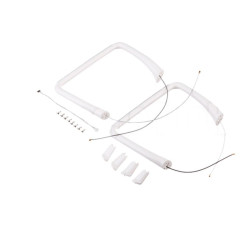Дрон DJI Phantom 4 Pro Plus
- Полетно време: 30 минути
- Хоризонтална скорост: До 72км/ч в Спортен режим
- Вертикална скорост: До 6м/сек в Спортен режим
- Обхват: 5км
- Камера (За детайли потърсете в „Повече информация“):
- Сензор: 1“ (CMOS)
- Ефективни мегапиксели: 20Mpx
- Резолюция: 4K
- Управление: Дистанционно управление, Lightbridge технология
- Тегло: 1388гр (с батерии; с перки)
- Размери: Диагонал (без перки) = 350мм
- Сензори и системи за позициониране:
- Система за позициониране надолу
- Система за позициониране нагоре
- Датчици за избягване на препятствия отпред
- Датчици за избягване на препятствия отзад
- Инфраред сензори за избягване на препятствия отстрани
Летете спокойно с най-новият дрон от Phantom сериите – Phantom 4 Pro. Улавяйте невероятни изображения с подобрената камера, разполагаща с 1-инчов 20-мегапикселов Exmor R CMOS сензор. Системата за избягване на препятствия е подобрена, осигуряваща засичане на препятствия в пет посоки и избягването им в четири. Phantom 4 Pro е с вградена инфраред система, която обезопасява полетите ви на съвсем различно ниво. Летете на разстояния до 7км благодарение на подобреното полетно време до приблизително 30 минути. Можете да достигнете до 72км/ч в спортен режим на летене. Режимите на полет също са подобрени, осигурявайки ви безгрижни и приятни полети.
DJI Phantom 4 Pro Plus разполага с дистанционнот управление с 5.5-инчов 1080p екран, който ви осигурява ясна картина дори при пряка слънчева светлина.
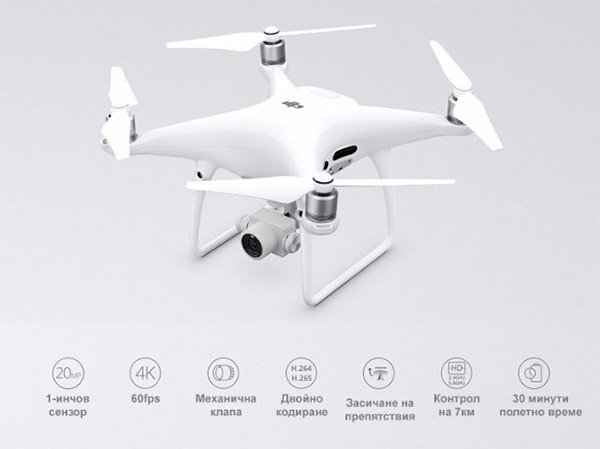
Подобрена камера, която е оборудвана с 1-инчов 20-мегапикселов сензор, ви дава възможност да снимате 4K/60fps видео и Burst Mode снимки с 14fps. Титанова сплав заедно с магнезиева сплав увеличава устойчивостта на дрона и намалява тежестта, правейки DJI Phantom 4 Pro с почти еднаква тежест като тази на DJI Phantom 4. FlightAutonomy системата добавя двойни сензори за задно виждане и инфраред сензорни система, които осигуряват наблюдение за препятствия в 5 посоки и избягване на препятствия в 4 посоки.
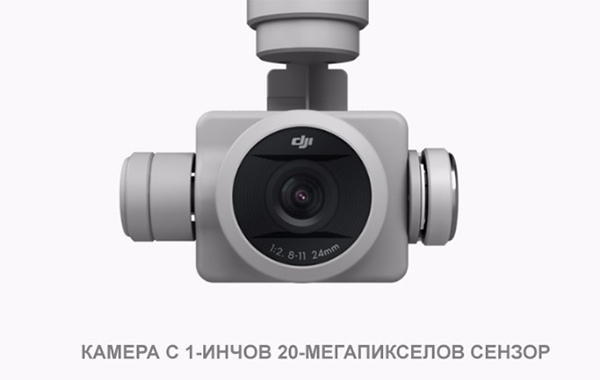
Бордовата камера е преработена, за да използва 1-инчов 20-мегапикселов CMOS сензор. Обектив, който е изграден от 8 елемента, подреден в седем групи. Това е първата DJI камера, която използва механична клапа, която елиминира изкривяването причинено от ролетната клапа при снимане на висока скорост. Мощна е колкото традиционните наземни камери. Подобрените сензори и процесори гарантират всеки детайл да бъде уловен.
1-ИНЧОВ 20-МЕГАПИКСЕЛОВ CMOS
Размерът на сензорът е по-важен за качеството на изображението от пикселите, тъй като по-голям сензор улавя повече информация във всеки пиксел, подобравяйки динамичния обхват отношението сигнал-към-шум и т.н. 1-инчовия 20-мегапикселов CMOS сензор в Phantom 4 Pro е почти четири пъти по-голям от този на Phantom 4 (1/2.3 инча). Използва по-големи пиксели и притежава максимално ISO 12800, както и увеличен контраст.
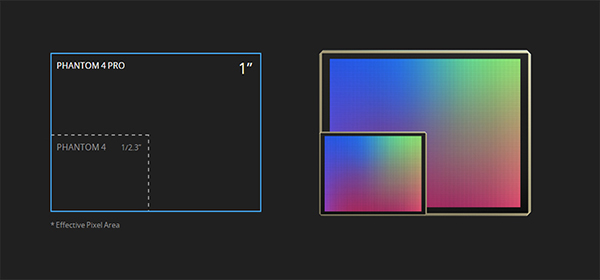
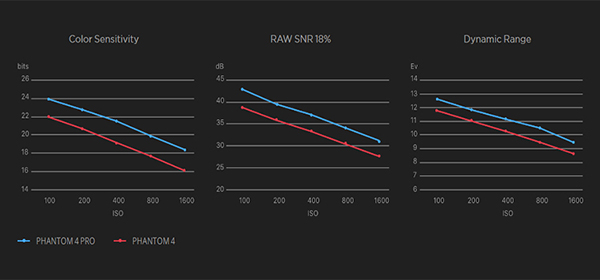
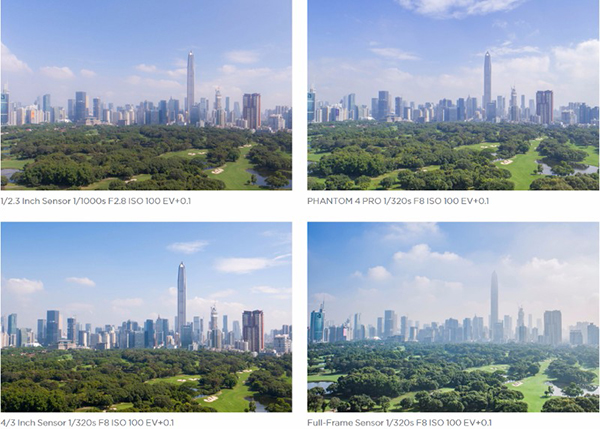
ОПТИМИЗИРАНО 4K
Подобрената система за обработване на видео ви позволява да снимате 4096 х 2160/60fps с битрейт 100Mbps, което ви дава възможност да снимате с висока резолюция на забавен кадър. DJI Phantom 4 Pro също така поддържа H.265 видео кодек.

ОБЕКТИВИ С ВИСОКА РЕЗОЛЮЦИЯ
Резолюцията и контрастът на обективите са ключови за качеството на изображенията. Новата камера на Phantom 4 Pro има оптимизиран F2.8 широкоъгълен обектив с 24мм еквивалентна фокална дължина. Състои се от осем елемента – 2 асферични – подредени в 7 групи, които се събират в по-малка, компактна рамка.
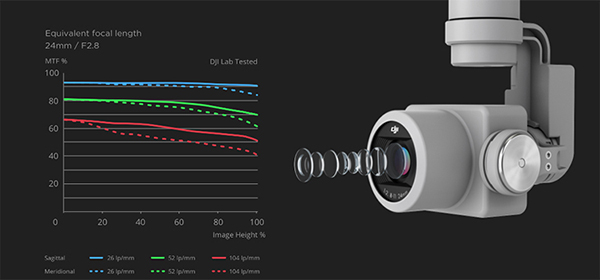
ЗАСИЧАНЕ НА ПРЕПЯТСТВИЯ В 5 ПОСОКИ
FlightAutonomy добавя визуални сензори, които се разполагат от задната страна, като допълнение на предните инфраред сензори от лявата и дясната страна. Благодарение на тях DJI Phantom 4 Pro може да засича препятствия в 5 посоки и да избягва препятствия в 4, което го предпазва от удари.

5.5-инчов 1080р екран, комбиниран с Phantom 4 Pro+ предлага 1000cd/m2 яркост, два пъти по-ярко от конвенционалните смарт устройства. Това прави ярките цветове лесни за виждане дори при директна слънчева светлина. С този екран не е необходимо мобилно устройство. С DJI GO приложението хардуерът и софтуерът могат да бъдат изцяло оптимизирани, за да се избегнат забавяния във видеата. Вградените HDMI порт, слот за микро SD карта, микрофон, вградени усилватели и Wi-Fi връзка дава възможност да обработвате изображения в DJI GO и да ги споделяте почти моментално. Батерията издържа до 5 часа.
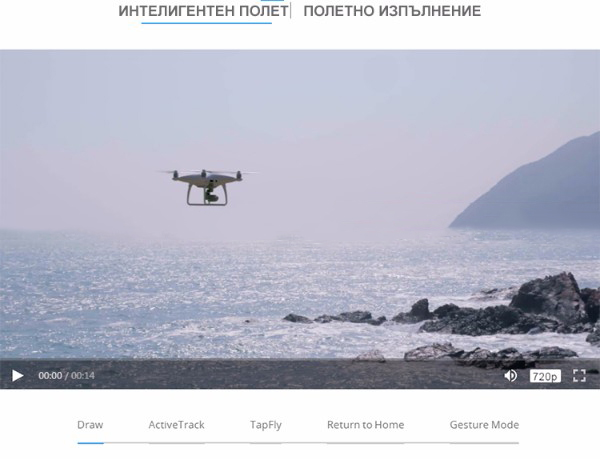
Draw е нова технология за точков контрол. Просто начертайте курс на екрана и дронът Phantom 4 Pro ще се движи в тази посока без да променя височината си. Това позволява на пилота да се фокусира върху контрола над камерата и позволява комплексни снимки. Има два Draw режима:
Standard: Дронът следва курса с постоянна скорост, а камерата гледа към посоката на движение.
Free: Дронът се движи по куса само по команда. В този режим камерата може да гледа навсякъде.
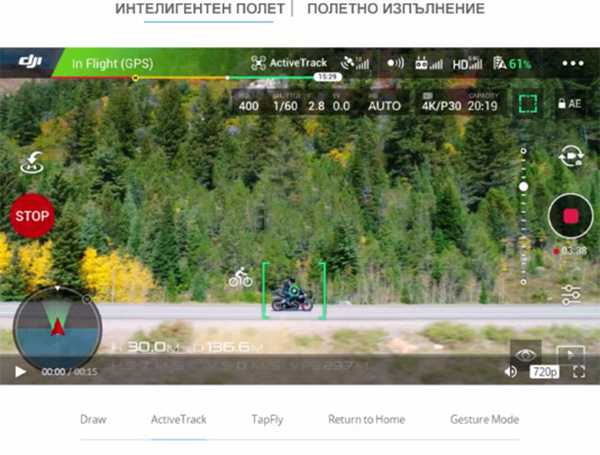
Дронът Phantom 4 Pro автоматично разпознава субекти, следва ги и ги снима, докато са в движение.
Да сл
двате високоскоростни обекти може да бъде голямо предизвикателство, но подобрените алгоритми за разпознаване на Phantom 4 Pro му позволяват да разпознае и следва обекта, докато го държи в кадър. Новият алгоритъм разпознава и повече обекти: хора, автомобили, животни, и настройва летателната си динамика, за да им съответства, осигурявайки по-гладки снимки.
Пилотите сега могат да избират между:
Преследване – Следене на обект отпред или отзад, избягвайки препятствия автоматично.
Профил – Летене около обект под различни ъгли, заснемайки го.
Spotlight – Заключва камерата върху обект, докато дронът се движи където поискате Вие.
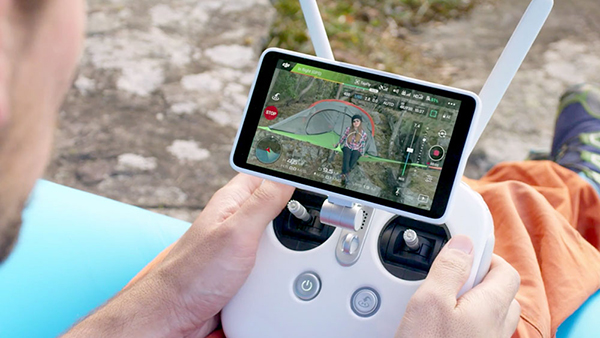
Летете, в която видима посока на екрана поискате, с едно просто докосване. Докоснете екрана, за да нагласите посоката на полета, автоматично избягвайки препятствия*. Нова AR route функция ви показва посоката на полета в реално време. Имайки предвид че не е лесно да се контролират височината, курса, скоростта и камерата едновременно, TapFly Free дава възможност на пилота да определи посоката на полета, което позволява да се управляват гимбала. За момента има три TapFly режима:
TapFly Forward - Натиснете, за да летите в определена посока.
TapFly Backward - Натиснете, за да летите в обратната посока, например натиснете долния десен ъгъл на екрана, за да излетите към горния ляв.
TapFly Free - Заключва посоката на DJI Phantom без да заключва камерата.
*Избягването на препятствия не е достъпно за TapFly Free
В подобрения RTH режим, дронът DJI Phantom 4 Pro може автоматично да избира най-добрия курс, по който да се върне, спрямо околната среда. Записва курса си докато лети, което му позволява да се върне по същия път, избягвайки препятствия в случай, че контролният сигнал се изгуби.
Когато се е изгубил сигналът, дронът Phantom 4 Pro е способен да регулира полетния си курс спрямо височината, за да избегне препятствия, които не е заснел по време на полет. При излитане Phantom 4 Pro заснема картината под него и я сравнява с това, което вижда в момента, за по-прецизно кацане. Може да сканира терена, за да провери дали има удобно място за кацане. Ако засече препятствия или под него има вода - дронът ще предупреди пилота и ще зависне на определена височина.

Използвайки Gesture Mode, можете да си правите селфита без дистанционното управление. Подобрената Vision технология позволява на дронът да разчита инструкции чрез жестове. Субектът просто трябва да вдигне ръце, гледайки към камерата, и дронът ще разпознае движението и ще заключи камерата върху субекта. При готовност субектът трябва да разпери ръце, за да сигнализира на дрона. Ще се включи 3-секундов таймер, който дава възможност да се в желаната поза.
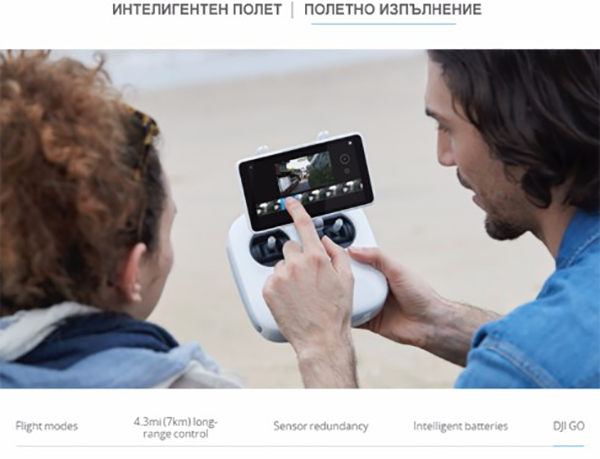
Когато снимате, дистанционното управление е отговорно за по-голямата част от физическия контрол и заснемането, но по-сложните снимки изискват видео обратна връзка в реално време, статистики за полета и настройки. Тези неща обикновено се управляват чрез смарт устройство, което го прави съществено при полетите. DJI GO приложението е оптимизирано да поддържа всички тези неща. Приложението може да се на смарт устройства и също така е възможно да се интегрира в DJI Crystalsky монитора, предлагайки прости и удобен контрол.
Използвайки DJI GO приложението могат да бъдат използвани много полетни режими. То дава достъп до ръчните настройки на камерата: ISO, апертура, скорост на заснемане, формат на изображението и др.
DJI GO предлага и инструменти за бързо редактиране и споделяне в социалните мрежи, и също снимане в реално време.

